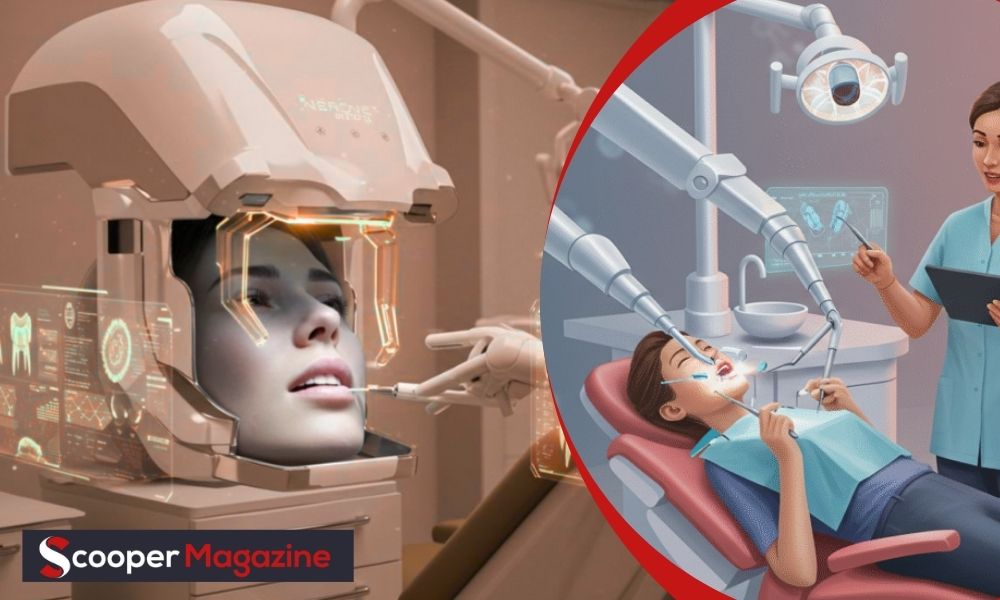HEALTH
Bed Bug Exoskeleton: Nature’s Armor and Its Role in Pest Control
 Bed bugs are notoriously difficult pests to eliminate, thanks in part to their tough exoskeletons. These tiny insects have a natural armor that not only protects them from external threats but also makes them resistant to many pest control methods. Understanding the bed bug exoskeleton is crucial for developing more effective ways to detect and eliminate infestations.
Bed bugs are notoriously difficult pests to eliminate, thanks in part to their tough exoskeletons. These tiny insects have a natural armor that not only protects them from external threats but also makes them resistant to many pest control methods. Understanding the bed bug exoskeleton is crucial for developing more effective ways to detect and eliminate infestations.
In this article, we’ll take a deep dive into the fascinating world of bed bug biology, focusing on their exoskeleton structure, shedding process (molting), and how their outer shell contributes to their resilience. We’ll also discuss how modern science, including exoskeleton suit technology, is drawing inspiration from these natural defenses.
What is a Bed Bug Exoskeleton?

The bed bug exoskeleton is a hard, protective outer layer that serves as both armor and support for these pests. Unlike mammals, which have internal skeletons (endoskeletons), bed bugs rely on their exoskeleton for:
Protection from predators
Preventing dehydration
Structural support for movement
Facilitating molting for growth
Structure of the Bed Bug Exoskeleton
The exoskeleton of a bed bug is composed of chitin, a tough yet flexible polymer that also forms the outer shells of insects, spiders, and crustaceans. This lightweight but durable structure allows them to move efficiently while staying well-protected.
- Epicuticle – The outermost layer, which prevents water loss and repels external substances.
- Exocuticle – The hardened middle layer that provides durability and flexibility.
- Endocuticle – The innermost layer, supporting the bed bug’s overall structure.
Why is the Bed Bug Exoskeleton So Tough?
One of the biggest reasons bed bugs are hard to kill is their resilient exoskeleton. The chitinous layers make them resistant to many pesticides and crushing forces.
Adaptability: Bed bugs adjust the thickness of their exoskeleton over generations, making them increasingly resistant to chemical treatments.
Flexibility: Their semi-rigid nature allows them to squeeze into tight spaces, making them difficult to detect and eliminate.
Self-repair Mechanism: While they cannot fully regenerate a damaged exoskeleton, they repair minor abrasions and shed the old shell to develop a stronger one.
Bed Bug Molting: The Process of Shedding the Exoskeleton
Bed bugs shed their exoskeletons multiple times during their life cycle. This process, known as molting (ecdysis), is essential for growth.
Stages of Bed Bug Molting
Bed bugs go through five nymphal stages before reaching adulthood. Each stage requires a blood meal before they can shed their old exoskeleton and grow a new one.
Nymph Stage 1: Tiny, translucent, and fragile.
Nymph Stage 2-4: Darker in color, exoskeleton thickens with each molt.
Adult Bed Bug: Fully matured, with a hardened, reddish-brown exoskeleton.
Each time a bed bug molts, it leaves behind a translucent, discarded shell, often mistaken for live bugs in an infestation.
Tip: Finding these shed exoskeletons in your home is a strong indicator of an infestation!
How the Bed Bug Exoskeleton Helps in Survival
The exoskeleton of a bed bug is a key survival mechanism, making them one of the most challenging pests to eliminate.
Pesticide Resistance: Many traditional insecticides struggle to penetrate the tough outer shell.
Water Retention: Their waxy coating helps them survive without food for months.
Camouflage & Protection: Their flattened bodies and flexible exoskeletons let them hide in the smallest cracks and crevices.
Interesting Fact: Scientists are studying the bed bug exoskeleton to develop better pest control strategies and even improve human exoskeleton suit technology!
What is an Exoskeleton Suit & How Does it Relate to Bed Bugs?
An exoskeleton suit is a wearable robotic framework that provides strength, endurance, and protection to the human body. These suits are used in:
Medical rehabilitation (helping people walk again)
Military applications (enhanced soldier protection)
Heavy industry work (reducing physical strain)
How Are Bed Bugs Inspiring Exoskeleton Suit Technology?
Researchers analyzing insect exoskeletons—including bed bugs—are using their natural defense mechanisms to improve exoskeleton suit designs. Bed bug-inspired features include:
- Lightweight but durable materials mimicking chitin
- Flexible yet impact-resistant outer shells
- Self-repairing coatings similar to how bugs shed their old exoskeletons
This bio-inspired innovation could lead to stronger, more adaptable human exoskeleton suits in the future!
How to Combat Bed Bugs by Understanding Their Exoskeleton
Since bed bugs are resistant to many traditional treatments due to their tough exoskeletons, pest control methods need to target their vulnerabilities.
Best Methods for Bed Bug Removal
Heat Treatment – Bed bugs cannot survive temperatures above 120°F (49°C), which destroys both bugs and their exoskeletons.
Diatomaceous Earth – This natural powder dehydrates and damages their outer shell, leading to death.
Vacuuming & Steam Cleaning – Physically removes live bugs and exoskeletons from furniture and bedding.
Professional-Grade Insecticides – Some advanced treatments can penetrate their exoskeletons, but repeated applications may be necessary.
Pro Tip: If you see bed bug exoskeletons in your home, it means the infestation is active and growing. Act fast!
Conclusion
The bed bug exoskeleton is a natural armor that plays a crucial role in their survival and resistance to treatments. By understanding how their chitinous shell works, pest control experts can develop better elimination strategies.
At the same time, scientists are taking inspiration from insect exoskeletons to improve exoskeleton suit technology, leading to stronger, more resilient designs for medical, military, and industrial applications.
If you suspect an infestation, keep an eye out for shed exoskeletons, as they are a clear sign that bed bugs are present. Using heat, diatomaceous earth, and vacuuming can help combat these resilient pests effectively.
FAQs About Bed Bug Exoskeletons
What is a bed bug exoskeleton made of?
A bed bug exoskeleton is made of chitin, a tough and flexible material that provides protection and structural support. It helps bed bugs retain moisture and shields them from external threats.
Why are bed bugs so hard to kill?
Bed bugs have a thick exoskeleton that makes them resistant to many insecticides. Their ability to squeeze into tiny crevices and develop pesticide resistance over generations also makes them difficult to eliminate.
How often do bed bugs shed their exoskeleton?
Bed bugs molt (shed their exoskeleton) five times before reaching adulthood. Each shedding stage (nymphal stage) requires them to feed on blood before they can grow and develop a new exoskeleton.
What does a bed bug exoskeleton look like?
A shed bed bug exoskeleton is translucent, pale, and slightly brittle. It is often mistaken for a live bug but will not move. Finding multiple exoskeletons in your home is a strong sign of an active infestation.
How can I remove bed bug exoskeletons from my home?
To remove bed bug exoskeletons, you can:
Vacuum thoroughly around beds, furniture, and cracks
Steam clean upholstery and carpets to kill hidden bed bugs
Use diatomaceous earth to break down the remaining exoskeletons
Wash infested bedding and clothing at high temperatures
What is an exoskeleton suit, and how does it relate to bed bugs?
An exoskeleton suit is a wearable robotic framework designed to enhance strength, endurance, and mobility. Scientists study insect exoskeletons, including bed bugs, to develop flexible yet strong materials for advanced exoskeleton suit technology used in medicine, military, and heavy industries.
Can exoskeleton suit technology be inspired by bed bugs?
Yes! Researchers are studying bed bug exoskeletons to design self-repairing coatings, flexible armor, and lightweight yet durable materials for human exoskeleton suits.
Does a bed bug exoskeleton protect it from heat treatments?
No. While the exoskeleton makes bed bugs resilient to pesticides, it cannot withstand high temperatures. Heat treatments above 120°F (49°C) effectively kill bed bugs and destroy their exoskeletons.
How do bed bugs develop resistance to pesticides?
Bed bugs evolve over generations, strengthening their exoskeletons and detoxifying chemicals faster. This makes many traditional pesticides ineffective, requiring heat treatments and specialized insecticides for control.
Are there natural ways to break down a bed bug exoskeleton?
Yes! Diatomaceous earth is a natural powder that damages the waxy coating of the bed bug exoskeleton, leading to dehydration and death. Steam treatments and high heat are also effective natural solutions.
HEALTH
gel ooru: The Village of Togetherness and the Cultural Tapestry of Modern Heritage

 gel ooru In a world driven by technology, speed, and constant change, it’s refreshing to find concepts that bring us back to our roots — to people, place, and purpose. Gel Ooru is one such idea. The phrase itself carries warmth and weight, evoking images of community, harmony, and connection.
gel ooru In a world driven by technology, speed, and constant change, it’s refreshing to find concepts that bring us back to our roots — to people, place, and purpose. Gel Ooru is one such idea. The phrase itself carries warmth and weight, evoking images of community, harmony, and connection.
Across various interpretations, Gel Ooru represents a village of unity — a cultural and spiritual center that celebrates heritage, human relationships, and shared creativity. Some see it as a real place steeped in ancient architecture and nature; others view it as a cultural movement or digital platform connecting tradition with modern life.
In this article, we explore every dimension of Gel Ooru: its origins, cultural significance, artistic expressions, and how it continues to thrive — both in the real world and online.
The Meaning of “Gel Ooru”
To understand Gel Ooru, we begin with language — where every word is rooted in culture.
-
“Gel” in several South Indian dialects refers to togetherness, gathering, or friendship.
-
“Ooru” means village, hometown, or place in Dravidian languages like Kannada, Tamil, and Telugu.
Put together, Gel Ooru literally means The Village of Togetherness or The United Village.
This simple yet profound name captures the essence of what Gel Ooru stands for — unity in diversity, community in creativity, and belonging in being. It’s not just a geographic location; it’s a living idea about people and their shared stories.
Gel Ooru as a Place of Heritage
1 Geography & Setting
In certain narratives, Gel Ooru is described as a real village in South India, perhaps tucked away in Karnataka’s lush countryside or among Tamil Nadu’s ancient hills.
It’s often depicted as a “stone village,” with carved temples, cobbled streets, and homes made of earthy materials that breathe with time. The natural setting — forests, streams, and rolling fields — complements its human touch.
Here, life moves at the pace of the sun and the rhythm of festivals. People greet each other by name, artisans still work with their hands, and nature remains an inseparable part of daily existence.
2 Architecture and Craft Heritage
Gel Ooru’s visual charm lies in its architecture — a blend of simplicity and sophistication.
-
Stone Temples: Hand-carved sanctuaries with intricate sculptures and mythological motifs.
-
Courtyards & Pillars: Open spaces that invite conversation, festivals, and family gatherings.
-
Traditional Homes: Made with local stone, wood, and clay — practical, beautiful, and sustainable.
These elements aren’t just aesthetic; they represent centuries of craftsmanship and knowledge. Every carving and structure tells a story — of devotion, artistry, and continuity.
Gel Ooru as a Cultural Identity
While some perceive Gel Ooru as a geographic location, others celebrate it as a cultural concept — a way of living that blends creativity, sustainability, and spirituality.
1 The Art of Craftsmanship
In the cultural interpretation, Gel Ooru is home to artisans and craftspeople who preserve ancient techniques — from stone and clay to wood and natural fibers.
Their creations may include:
-
Sculptures and decorative carvings
-
Clay vessels and earthenware
-
Handmade coasters, wall art, and wellness tools
-
Natural, eco-friendly design elements
The spirit of Gel Ooru lies in craftsmanship that connects people to their materials and environment. Every creation carries a fragment of history — molded by hand, fired by earth, and inspired by culture.
2 The Celebration of Festivals
In many accounts, Gel Ooru is also known for vibrant festivals — celebrations that merge music, dance, ritual, and art.
These festivals reflect the idea of unity in diversity, bringing together villagers, travelers, and artists alike. Common highlights include:
-
Folk performances: Traditional dance, storytelling, and music.
-
Workshops: Clay art, weaving, and stone carving.
-
Community feasts: Shared meals that celebrate local produce and culinary heritage.
-
Cultural dialogues: Youth forums and heritage education for preservation.
Each festival is a living canvas — a space where the past meets the present in song, dance, and dialogue.
Gel Ooru in the Digital Age
As the world becomes increasingly digital, so too does Gel Ooru. What was once a village is now also an online platform connecting artisans, cultural enthusiasts, and heritage seekers globally.
1 Gel Ooru as an Online Platform
Web platforms like gelooru.com (or similar domains) represent the evolution of this idea — transforming traditional heritage into digital storytelling.
These sites and social communities often include:
-
Cultural archives — documenting oral histories, art, and folklore.
-
Artisan marketplaces — where craftspeople sell handmade products to global buyers.
-
Virtual workshops — teaching traditional skills through video sessions.
-
Community spaces — where users share stories, memories, and ideas about heritage.
By blending tradition and technology, Gel Ooru bridges the gap between local roots and global reach — preserving authenticity while embracing innovation.
2 Wellness and Sustainable Living
Modern interpretations also link Gel Ooru to wellness and sustainability. Inspired by natural materials and mindful living, Gel Ooru crafts and concepts are increasingly used in:
-
Home décor – eco-friendly mats, clay art, and sculptures.
-
Wellness tools – natural massage implements, stone-based therapy tools.
-
Mindful living products – simple, sustainable designs promoting calm and connection.
Gel Ooru’s philosophy reminds us that culture isn’t separate from life — it’s woven into our homes, routines, and well-being.
The Symbolism and Significance of Gel Ooru
At its core, Gel Ooru is not merely about place or craft. It is about values — unity, heritage, sustainability, and belonging.
1 Unity and Togetherness
The name itself celebrates unity. In a time when societies are becoming increasingly fragmented, Gel Ooru reintroduces the idea of collective strength — of shared joy, grief, and creativity.
2 Heritage and Continuity
Every culture faces the challenge of preserving its traditions. Gel Ooru shows how heritage can stay alive — not through museums, but through living practices, evolving art, and education.
3 Sustainability and Nature
From materials to mindset, Gel Ooru stands for sustainability. Its crafts and culture encourage us to live lightly — to use what’s local, honor the earth, and waste less.
4 Identity and Belonging
For people connected to Dravidian roots, the word Ooru itself stirs emotion — it’s a call to remember home. Gel Ooru becomes a metaphor for every person’s search for belonging — no matter where they are.
Experiencing Gel Ooru
Whether physical or digital, Gel Ooru invites everyone to participate.
1 Visiting the Village
If Gel Ooru exists as a real location, travelers can:
-
Visit during local festivals for immersive experiences.
-
Explore ancient temples and village layouts.
-
Engage with artisans in workshops or craft studios.
-
Stay in local homestays for authentic cultural connection.
2 Attending Cultural Events
If Gel Ooru is a festival or cultural collective, you might:
-
Watch live performances and folk dances.
-
Join storytelling and music sessions.
-
Participate in community meals and local rituals.
3 Exploring Gel Ooru Online
Digital platforms make Gel Ooru accessible worldwide. Visitors can:
-
Read articles and watch documentaries.
-
Buy handmade crafts directly from artisans.
-
Join online classes in art, music, or heritage.
-
Share personal stories or creative works.
4 Bringing Gel Ooru Home
You can live the Gel Ooru philosophy by:
-
Supporting artisan cooperatives.
-
Using eco-friendly crafts in daily life.
-
Sharing cultural stories with family or community.
-
Living sustainably and mindfully.
Challenges Facing Gel Ooru
Cultural revival is beautiful but complex. Gel Ooru’s journey is not without obstacles.
1 Authenticity vs Commercialization
As heritage gains popularity, there’s a danger of it being commodified — mass-produced and stripped of meaning. Maintaining authenticity is a constant balancing act.
2 Preservation and Generational Gaps
Young artisans often move to cities, leaving behind traditional crafts. Sustaining Gel Ooru requires education, incentives, and cultural mentorship.
3 Infrastructure and Connectivity
If Gel Ooru is rural, limited infrastructure — roads, internet, logistics — can affect tourism and trade opportunities.
4 Economic and Environmental Pressures
Balancing profit and preservation is challenging. Over-tourism, climate change, or mass production could threaten both nature and heritage.
Lessons from Gel Ooru for the Modern World
What can modern society learn from Gel Ooru?
-
Community over isolation: Success is collective, not individual.
-
Sustainability over consumption: True progress respects balance.
-
Culture as a living practice: Heritage must evolve, not fossilize.
-
Rootedness in change: One can innovate without losing identity.
-
Technology as ally: Digital tools can preserve and promote culture responsibly.
Gel Ooru reminds us that being modern doesn’t mean abandoning tradition — it means carrying it forward consciously.
The Future of Gel Ooru
The next chapter of Gel Ooru could unfold in many exciting ways:
-
Cultural revival programs — restoring temples, crafts, and oral histories.
-
Eco-tourism & heritage retreats — combining wellness with culture.
-
Online learning academies — teaching art, language, and sustainability.
-
Artist collaborations — merging traditional motifs with contemporary design.
-
Community-driven marketplaces — empowering artisans and preserving identity.
If nurtured with sincerity, Gel Ooru could become a model for cultural resilience — where economy, environment, and tradition coexist harmoniously.
Conclusion: Gel Ooru
Gel Ooru is more than a location or concept. It’s a philosophy — one that blends tradition with transformation, and individuality with community.
It reminds us that culture isn’t something to be archived — it’s something to be lived. Every festival, every handmade object, every story told under the stars adds another heartbeat to this united village.
As the world evolves, Gel Ooru stands as a testament to what truly matters — people, purpose, and belonging.
FAQs Gel Ooru
1. What is Gel Ooru?
Gel Ooru means “The Village of Togetherness.” It represents a community-centered concept rooted in heritage, craftsmanship, and unity.
2. Is Gel Ooru a real place?
Some sources describe it as a real village in South India with ancient architecture and cultural depth, while others treat it as a symbolic or digital movement celebrating heritage.
3. What happens during Gel Ooru festivals?
Folk dances, music, storytelling, craft exhibitions, and communal feasts that celebrate culture, creativity, and connection.
4. Does Gel Ooru have an online presence?
Yes. Platforms such as gelooru.com showcase artisans, heritage stories, cultural events, and educational content.
5. How can people participate?
Visit Gel Ooru (if physical), join festivals, support artisans, buy local crafts, or engage through online platforms and cultural projects.
6. What are Gel Ooru’s main values?
Unity, sustainability, creativity, and respect for nature and heritage.
7. What challenges does Gel Ooru face?
Maintaining authenticity amid commercialization, encouraging youth participation, and balancing economic growth with cultural preservation.
HEALTH
Nerovet AI Dental Review: Benefits, Features & Real Impact

Introduction
Artificial Intelligence is transforming dentistry at a pace we’ve never seen before. From smarter diagnostics to predictive treatment planning, AI is taking dental care to a whole new level. One solution leading this change is Nerovet AI Dental. But how effective is it really? This comprehensive review explores its benefits, features, and real-world impact—helping dentists and patients alike understand why Nerovet is reshaping modern dentistry.
Nerovet AI Dental Review
Nerovet AI Dental is a state-of-the-art platform that leverages artificial intelligence to assist dentists in diagnostics, treatment, and workflow optimization. Unlike traditional methods, it provides instant analysis, predictive insights, and personalized patient experiences—making dentistry smarter and more accurate.
This review breaks down what makes Nerovet AI Dental such a powerful innovation.
Key Features of Nerovet AI Dental
-
AI-driven diagnostics for X-rays and scans
-
Predictive analytics for future dental health risks
-
Personalized treatment plans for patients
-
Real-time imaging support during procedures
-
Integration with digital dentistry tools like CAD/CAM and 3D printing
-
Workflow automation for scheduling, billing, and documentation
Benefits of Using Nerovet AI Dental
-
Higher accuracy in detecting dental issues
-
Time savings for dentists and patients
-
Cost efficiency through fewer errors and streamlined processes
-
Improved patient trust with visual simulations and clear explanations
-
Future-focused care through preventive AI insights
Nerovet AI Dentistry
The concept of nerovet ai dentistry reflects how clinics worldwide are adopting this AI-powered solution. It is not replacing dentists but empowering them with tools to make smarter decisions, build patient trust, and enhance outcomes.
How Nerovet AI Dental Works
The system relies on machine learning algorithms trained on thousands of dental records, images, and case histories. It can detect abnormalities, analyze bite alignment, and even suggest treatment pathways.
Think of it as a digital dental assistant that never gets tired.
Enhanced Diagnostics
Traditional methods often rely on visual inspection or manual interpretation of X-rays. Nerovet AI Dental enhances this process by scanning every pixel, spotting even the tiniest signs of decay, gum disease, or bone loss.
Personalized Care Plans
Every mouth is unique, and so are treatments. Nerovet AI Dental designs customized care plans tailored to each patient’s dental history, lifestyle, and future risks.
Improving Patient Experience
Patient anxiety is a major hurdle in dentistry. Nerovet AI provides visual treatment simulations that help patients see their expected outcomes—turning fear into confidence.
Workflow Automation
From appointment reminders to generating case notes, AI saves clinics valuable time. Dentists can now spend more time treating patients instead of managing paperwork.
Real-Time Imaging Support
During surgeries, Nerovet AI Dental analyzes images instantly, guiding dentists with precision feedback. This reduces risks and improves success rates.
Cost Savings for Clinics
While the initial investment may be high, the return on investment (ROI) comes quickly. Clinics using Nerovet AI report fewer misdiagnoses, shorter treatment times, and happier patients—all leading to better business outcomes.
Case Studies and Real Impact
-
Orthodontics: Faster aligner planning with higher accuracy
-
Preventive dentistry: Early detection of oral cancers and gum diseases
-
Pediatric dentistry: Friendlier approaches that help children feel safer
These real-world applications prove Nerovet AI Dental is more than just hype—it’s making a tangible difference.
AI in Preventive Dentistry
Instead of waiting for problems, Nerovet AI Dental predicts them. By analyzing lifestyle factors and oral health data, it helps dentists focus on prevention rather than cure.
Orthodontics Powered by AI
Aligner treatments and braces are smarter with AI. Nerovet AI predicts movement patterns and treatment duration, ensuring faster, more reliable results.
Pediatric Dentistry Applications
Children often fear dentists, but with interactive AI visuals, dental visits become less intimidating, leading to better cooperation and care.
Integration with Digital Dentistry
Nerovet AI Dental pairs seamlessly with 3D printing and CAD/CAM systems, helping create crowns, implants, and aligners faster and more accurately.
Teledentistry Support
AI-enabled remote consultations are now possible, allowing dentists to diagnose patients virtually and recommend treatments from afar.
Ethical Considerations
With AI handling sensitive medical data, privacy and security are crucial. Nerovet AI Dental follows strict data protection protocols to ensure safety and trust.
Challenges of Adoption
-
High setup costs
-
Training requirements for dentists
-
Skepticism toward AI replacing traditional expertise
Yet, as results prove its value, more clinics are moving toward adoption.
Nerovet AI vs Traditional Dentistry
Traditional dentistry relies heavily on manual expertise. Nerovet AI provides an extra layer of precision, efficiency, and foresight, complementing—not replacing—dentists.
Global Expansion of Nerovet AI Dental
Countries with advanced healthcare systems like the U.S., Germany, and Japan are leading adopters, while developing nations are beginning to catch up.
Future of Nerovet AI Dentistry
In the future, expect Nerovet AI to integrate with wearable oral devices, self-diagnosis apps, and even robotic dentistry. The possibilities are endless.
Patient Testimonials
Patients often report feeling more confident, less anxious, and better informed about their treatments when Nerovet AI Dental is involved.
Impact on Dental Education
Dental schools are now training students with AI-powered simulations, making them more skilled before entering real-world practice.Insurance and Policy Influence
AI-driven diagnoses are likely to reshape dental insurance policies, allowing quicker claims and coverage for preventive care.
Final Thoughts on Nerovet AI Dental
This Nerovet AI Dental review shows that the platform is not just an add-on—it’s a game-changer. From diagnostics to patient care, it enhances dentistry at every stage. While adoption challenges remain, the benefits far outweigh the drawbacks.
Conclusion
Nerovet AI Dental is the future of smart, accurate, and patient-friendly dentistry. With its powerful features, proven benefits, and real-world impact, it’s helping dentists work smarter and patients feel safer. Simply put, Nerovet AI Dental is setting the gold standard for modern dentistry.
FAQs
What is Nerovet AI Dental?
It’s an AI-powered system designed to improve dental diagnostics, treatment, and workflows.
What are the key benefits of Nerovet AI Dental?
Greater accuracy, time efficiency, personalized care, and cost savings.
How does Nerovet AI Dental impact patients?
Patients benefit from less anxiety, clearer treatment plans, and improved outcomes.
Is Nerovet AI Dentistry expensive?
Initial costs can be high, but the return on investment is significant.
Can Nerovet AI Dental replace dentists?
No, it complements and supports dentists rather than replacing them.
Where is Nerovet AI Dental being adopted?
Globally, especially in advanced healthcare systems.
HEALTH
Smart Ways for NRIs to Buy Health Insurance in India Remotely

For an NRI living in the UAE, life often feels like a well-balanced mix of career growth, financial comfort, and global opportunities. Yet, amid the high-rises of Dubai or the calm of Abu Dhabi, a part of you always remains connected to India, your family, your roots, and your long-term responsibilities. One crucial responsibility that often goes overlooked is securing health insurance coverage back home. Whether for yourself, your spouse, or your ageing parents in India, having a reliable policy can make a world of difference, emotionally and financially.

With rising medical costs and a growing awareness around healthcare planning, many NRIs are now exploring ways to invest in the best health plan in India, all without having to fly down or deal with layers of paperwork. The good news? Technology and cross-border insurance services have made the process of buying health insurance in India from abroad seamless and surprisingly straightforward.
If you’re living in the UAE and considering health coverage for your loved ones, or even planning for your eventual return to India, here are the smartest ways to go about it.
Understanding the Need for Health Insurance in India
Health risks don’t wait for borders. And while you may be well-covered in the UAE through employer-sponsored or private insurance plans, those policies often don’t extend coverage to your dependents in India. More importantly, they don’t help when you or your family members need medical care during a visit to India or in your retirement years.
India’s healthcare costs are rising steadily. A simple hospitalisation, especially in metros or tier-1 cities, can run into lakhs of rupees. Having the right insurance plan can safeguard your savings, reduce stress during medical emergencies, and ensure access to quality healthcare across India’s top hospitals.
Start with the Right Digital Platform
Gone are the days when buying insurance meant chasing local agents or visiting offices in person. Today, most insurers in India offer intuitive, easy-to-navigate websites where you can browse policies, compare features, and make purchases from anywhere in the world. Some of the well-known platforms include official insurer websites.
These platforms allow you to:
- Filter health insurance plans based on coverage needs, age, and family size
- Understand the inclusions, exclusions, and premium breakdown
- Read verified reviews from Indian policyholders
- Chat with advisors online or request a call-back at a UAE-friendly time
- Upload documents securely and receive policy documents digitally
This digital-first approach enables NRIs to evaluate their options carefully and find the best health plan in India without setting foot on Indian soil.
Selecting the Right Plan: What Should NRIs Look For?
Choosing a health plan remotely can be tricky unless you know what to prioritise. NRIs should focus on policies that provide:
- Comprehensive coverage: A plan that includes hospitalisation, pre- and post-hospitalisation coverage, daycare treatments, and ambulance charges.
- Cashless network hospitals: A strong network of hospitals across India for easy claim settlements.
- High Sum Insured: Considering medical inflation, opt for a higher sum insured—₹10 lakh and above is ideal.
- Minimal Waiting Periods: Especially important if you’re purchasing insurance for elderly parents.
- Pre-existing Disease Cover: Look for shorter waiting periods and transparent terms on existing conditions.
- Lifelong Renewability: This ensures continued coverage without age-based restrictions in later years.
- Global Assistance: Some Indian insurers offer riders for global coverage, which may be helpful if your family travels frequently.
Can You Buy It for Your Parents Living in India? Yes, and You Should

One of the most common reasons UAE-based NRIs look into Indian health insurance is to secure coverage for their ageing parents. Fortunately, most insurers now allow NRIs to buy health plans for their parents online, even if the applicants themselves are not present during the purchase.
You’ll need your parents’ details (age, medical history, ID proof, etc.), and you can act as the proposer while they remain the insured members. Many insurers even coordinate medical tests and health checks directly at your parents’ residence in India, making the process simple and completely remote.
Add-on Covers and Value-added Benefits
Don’t overlook optional covers while selecting a policy. Maternity benefits, OPD cover, room rent waivers, wellness programmes, annual health check-ups, and critical illness add-ons can significantly increase the value of your policy.
These features often come at a small extra premium but provide enhanced protection, especially for families with complex or chronic health conditions. They also ensure smoother hospital experiences in times of need.
Staying Connected and Managing Renewals
After purchasing a plan, it is equally essential to stay updated about renewal dates, coverage changes, and new add-ons. Most insurers offer mobile apps and online portals that NRIs can access easily from the UAE. You can view e-cards, download policy documents, initiate claims for your family members, or even request changes, all online.
If you prefer assistance, many insurers provide dedicated NRI customer support numbers or email channels to ensure you’re never out of the loop.
In Conclusion
As an NRI in the UAE, you’re making wise financial decisions daily, sending remittances home, investing in Indian real estate, or planning for your child’s education. It’s time to extend that same thoughtful planning to health insurance.
At Niva Bupa, we understand the unique needs of NRIs. That’s why we offer health insurance plans that are consistently ranked among the best in India—thanks to our high claim settlement ratios, transparent processes, and superior service standards.
With the rise of digital platforms and NRI-friendly policies, securing the best health plan in India is easier than ever. Whether you’re looking to protect ageing parents or simply want peace of mind, we’re here to help you make the right choice—seamlessly and securely.
-

 CELEBRITY9 months ago
CELEBRITY9 months agoMatt Danzeisen: The Influential Yet Low-Key Force Behind Peter Thiel’s Success
-

 CELEBRITY9 months ago
CELEBRITY9 months agoWho Is Amelia Jane Henson? Everything You Need to Know About Mia Sara and Brian Henson’s Daughter
-

 CELEBRITY9 months ago
CELEBRITY9 months agoWho Is Gianluca Cugnetto? Everything You Need to Know About Hannah Waddingham’s Ex-Husband
-

 CELEBRITY9 months ago
CELEBRITY9 months agoWho Is Jasmine Gong? Everything You Should Know About Brad Williams’ Wife
-

 CELEBRITY9 months ago
CELEBRITY9 months agoWho Is Erika Tureaud? All You Need to Know About Mr. T’s Daughter
-

 CELEBRITY9 months ago
CELEBRITY9 months agoRachel Catudal: Everything You Need to Know About Brandon Quinn’s Wife
-

 LATEST9 months ago
LATEST9 months agoWho Is Otelia Cox? Everything to Know About Tony Cox’s Wife
-

 CELEBRITY9 months ago
CELEBRITY9 months agoWho Is Joe Alfie Winslet Mendes? Everything You Should Know About Kate Winslet’s Son



